
Supercharge your lead generation with a FREE Google Ads audit - no strings attached! See how you can generate more and higher quality leads
Get My Free Google Ads AuditFree consultation

No commitment
Supercharge your lead generation with a FREE Google Ads audit - no strings attached! See how you can generate more and higher quality leads
Get My Free Google Ads AuditFree consultation

No commitment
In the world of sheet metal fabrication, standing out in an increasingly competitive market is crucial. Traditional marketing has its place, but digital advertising through Google Ads offers a unique opportunity to capture high-intent leads. Sheet metal fabricators often face challenges like missing high-value prospects and delayed follow-ups, leading to lost opportunities and cooled leads. Leveraging Google Ads effectively can address these pain points by enhancing targeting accuracy and lead engagement. This comprehensive guide will delve into actionable strategies to successfully implement Google Ads campaigns tailored for the sheet metal fabrication industry—providing practical insights for professionals aiming to enhance their digital marketing impact.
Effective digital marketing for manufacturers now hinges on the ability to reach technical buyers at the precise moment they are searching for solutions. Google Ads for Sheet Metal Fabrication empowers marketers to capture in-market demand by aligning ad visibility with high-intent search activity, ensuring every dollar spent targets qualified prospects instead of broad, untargeted audiences. For more insights on demand generation and digital strategy, explore our B2B marketing blog.
A streamlined lead generation framework blends advanced keyword targeting, personalized landing experiences, and real-time data integration to convert searchers into actionable sales opportunities. When these tactics are unified and continuously optimized, fabrication shops can achieve measurable pipeline growth, reduced lead response times, and an improved cost per acquisition that supports both short-term wins and long-term revenue goals.
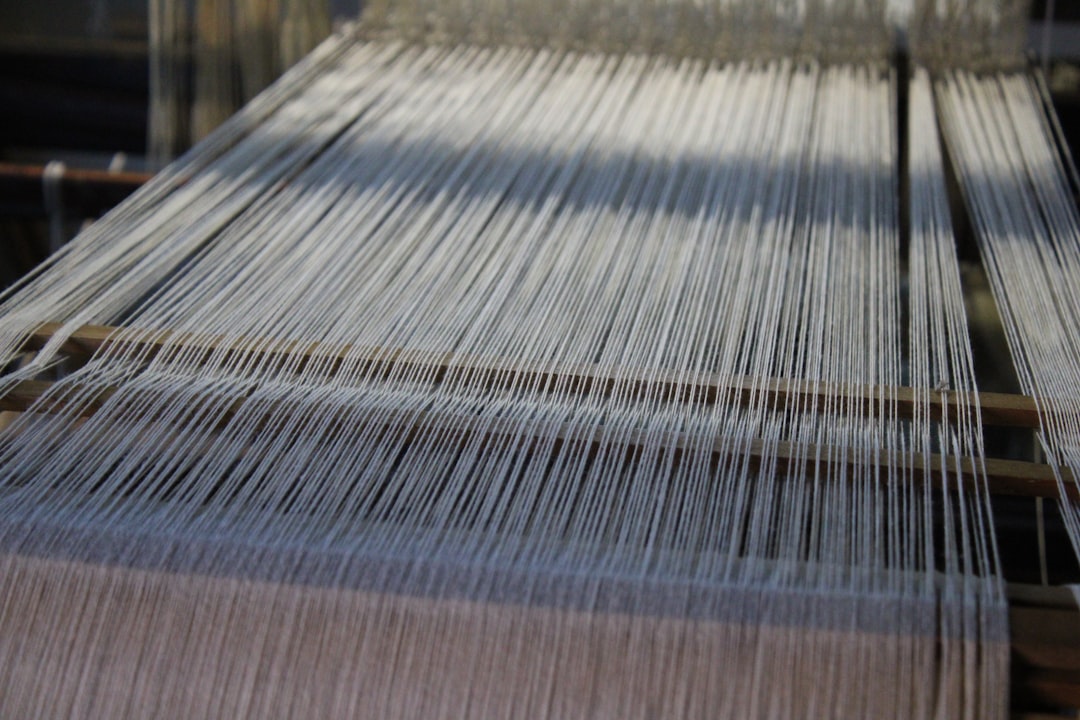
Sheet metal fabrication businesses operate in a market where timing, technical expertise, and relationship-building define success. A well-executed Google Ads strategy ensures that companies connect with decision-makers actively searching for specialized fabrication solutions, capturing high-value RFQs that would otherwise be won by competitors with faster digital response. Explore how PPC strategies drive manufacturing growth to see proven tactics for maximizing lead generation in this space.
By directly reaching project managers, engineers, and procurement teams at the moment of need, digital campaigns make it possible to secure new business and minimize the risk of missed opportunities due to untracked leads or slow follow-up. This fast response is especially critical during upticks in demand or emergency manufacturing scenarios when buyers expect immediate, relevant communication. For more B2B marketing insights, visit our blog on demand generation.
Targeted Google Ads campaigns allow fabricators to quickly deploy messaging tailored to specific industries, geographic regions, or technical requirements. Using account-level data and visitor identification, marketers can prioritize outreach to companies showing real interest, ensuring budgets are focused where they have the greatest impact. This data-driven approach not only expands visibility into emerging markets but also delivers measurable improvements in lead quality and project win rates. By integrating real-time audience insights, fabrication companies maximize campaign performance and build a sustainable pipeline of qualified opportunities.
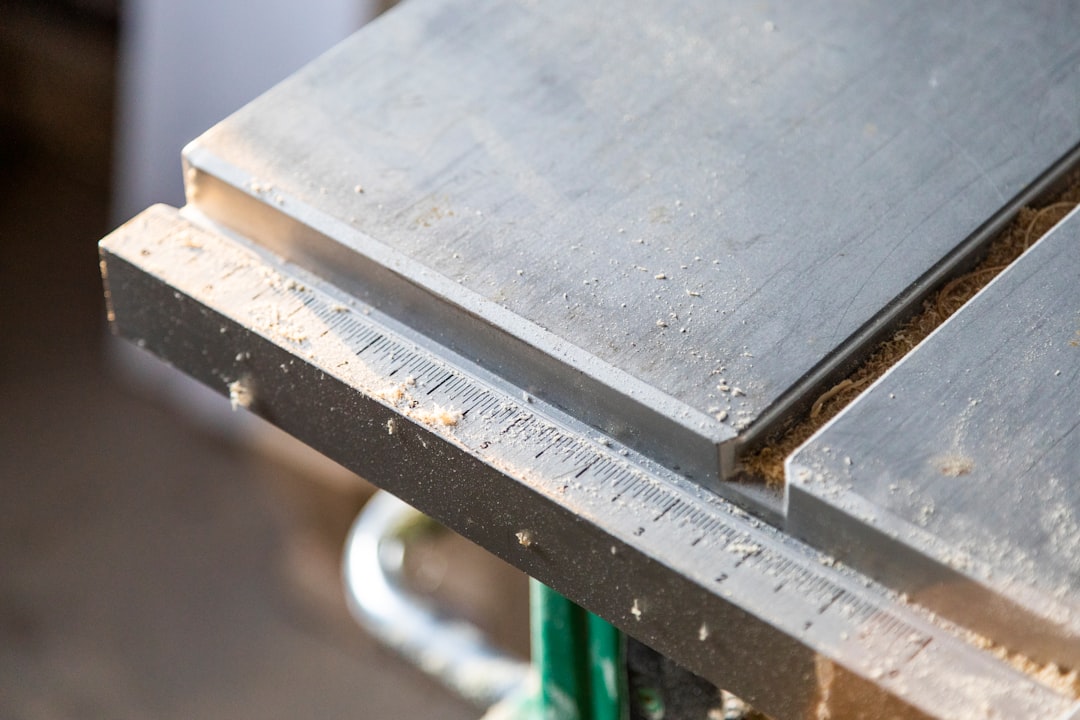
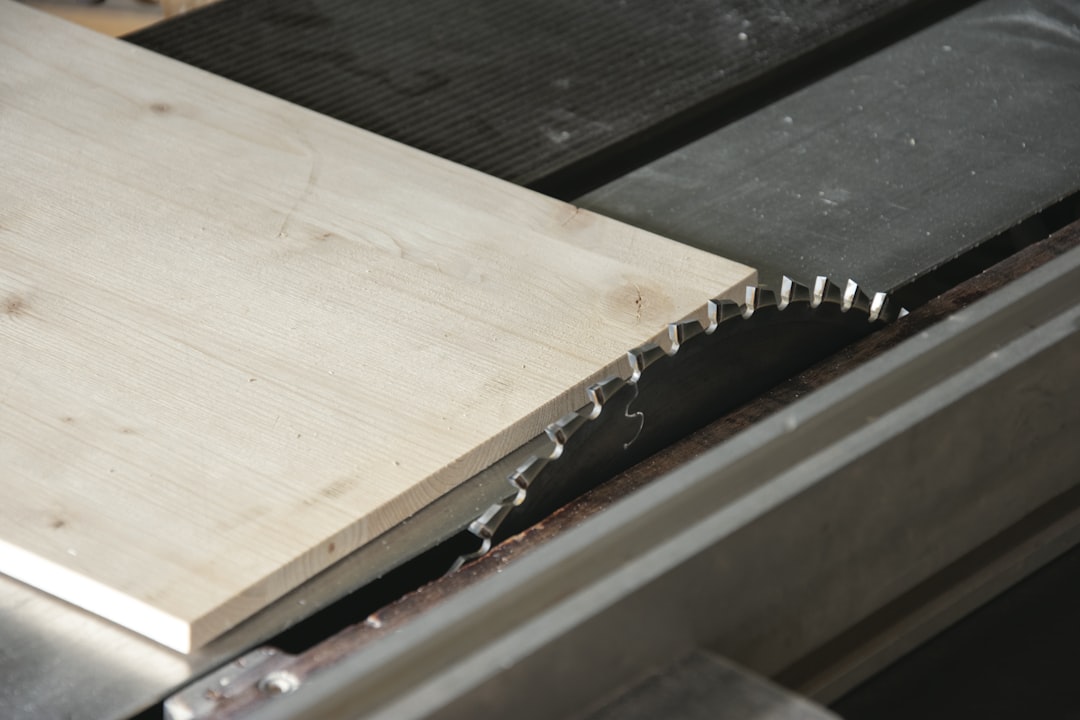
Fabrication businesses that excel at growth are those that surface overlooked opportunities and act decisively to capture new demand. By identifying high-intent specialty service keywords and aligning campaigns to market shifts, revenue teams can consistently outpace broader competitors. The focus is on precise audience intelligence, ensuring every marketing dollar is spent where it delivers tangible results.
One of the most valuable growth levers is vertical keyword targeting for niche services. Instead of generic terms, targeting phrases such as “precision sheet metal prototyping” or “aluminum enclosure fabrication” delivers highly qualified leads ready to move forward. These vertical-specific keywords attract buyers with urgent, project-ready needs and often face less competitive bidding pressure. Marketers who continuously mine their search term reports and industry forums for emerging service requests can add these terms to their campaigns for first-mover advantage.
Competitor gap analysis reveals where established players are under-serving segments or missing new trends. Marketers analyze ad copy, landing pages, and keyword footprints to spot weak coverage or lack of technical documentation in certain verticals. Prioritizing these gaps, especially when they show strong engagement signals such as high click-through rates or above-average form submissions, enables teams to invest budget in areas where customer demand remains unmet. Using visitor identification, marketers can pinpoint which accounts are engaging with these segments and quickly personalize follow-up, maximizing conversion rates.
Industry-specific placements and advanced content retargeting further boost engagement by delivering messages in the context that matters most to fabrication buyers. By monitoring in-market behavior, teams can dynamically shift budget and creative to channels where high-value accounts are actively researching or returning. When a platform unifies ad performance, website engagement, and CRM data integration, audiences update automatically as leads progress through the funnel, ensuring timely, relevant outreach. This integration unlocks real-time campaign performance insights, allowing digital marketers to double down on the best-performing segments and maximize their Google Ads ROI in the fabrication sector. If you’re ready to uncover and capture more growth opportunities, get started for free with Sona.
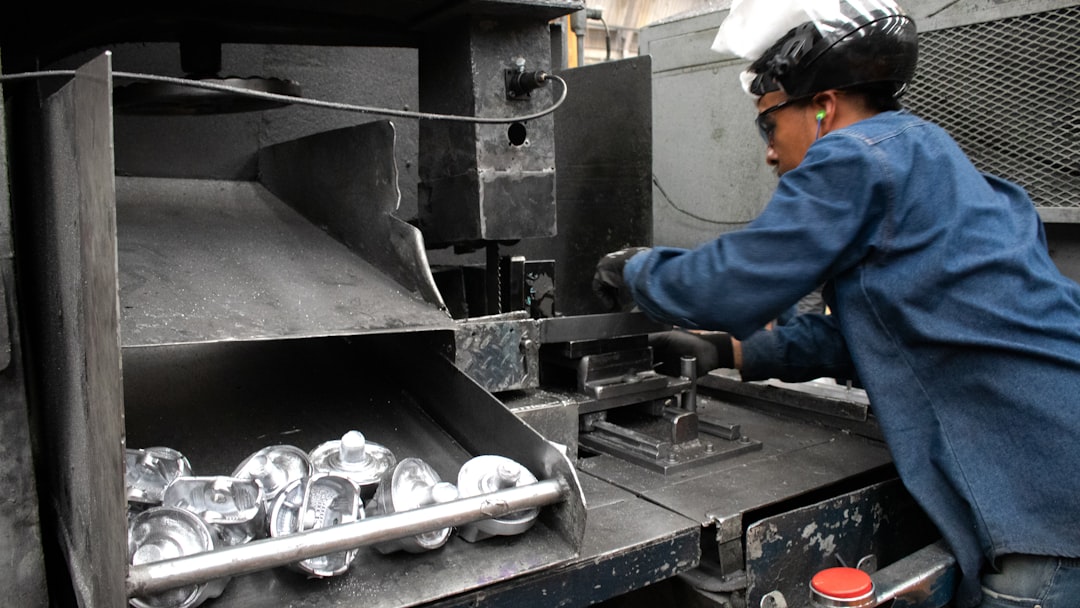
Audience segmentation is the foundation of an efficient lead generation strategy in the sheet metal fabrication sector. Identifying and grouping prospects by their industry role, company size, and procurement behaviors enables fabricators to allocate resources and messaging where they yield the greatest impact. To further refine your targeting and messaging, consider exploring PPC for manufacturing best practices, which outlines proven advertising strategies for this sector.
Ready to put segmentation into action? Get started for free with Sona.
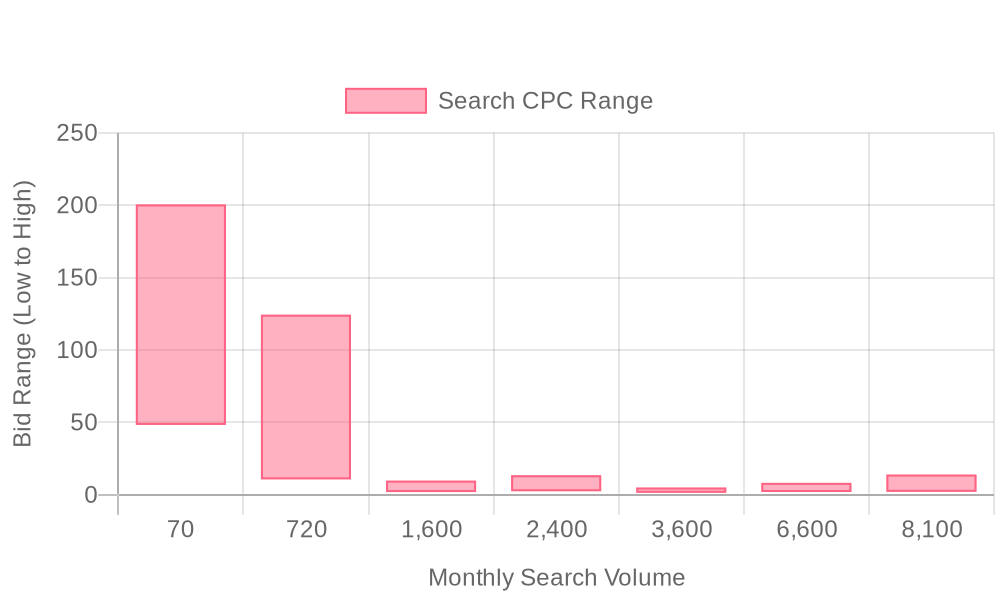
| Industry | Keyword | Monthly Search Volume | Competition Level | Low Bid | High Bid |
| Sheet Metal Fabrication | rapid sheet metal prototyping | 70 | LOW | 48.29 | 200.51 |
| Sheet Metal Fabrication | sheet metal prototyping | 720 | LOW | 10.75 | 124.4 |
| Sheet Metal Fabrication | custom sheet metal | 1600 | LOW | 1.96 | 9.8 |
| Sheet Metal Fabrication | custom sheet metal fabrication | 2400 | LOW | 2.53 | 13.56 |
| Sheet Metal Fabrication | sheet metal shop near me | 3600 | MEDIUM | 1.42 | 5.05 |
| Sheet Metal Fabrication | sheet metal fabrication near me | 6600 | MEDIUM | 1.98 | 8.28 |
| Sheet Metal Fabrication | sheet metal fabrication | 8100 | LOW | 2.14 | 13.98 |
A robust keyword strategy is essential for driving measurable results in online advertising for metal shops. High-performing PPC for metal fabrication campaigns prioritize keywords with clear commercial intent, ensuring every click is tied to a genuine business opportunity. By focusing on terms such as "sheet metal fabrication near me" or "custom sheet metal shop," marketers consistently reach buyers who are ready to initiate a project, request a quote, or schedule a consultation. For a deeper dive into proven PPC tactics tailored specifically to manufacturers, review PPC for manufacturing best practices.
Long-tail keywords play a pivotal role in fabrication marketing by capturing specialized segments of the market. These terms, such as "precision CNC sheet metal cutting services" or "aerospace metal fabrication partner," attract leads with specific requirements, reducing wasted spend and increasing conversion rates. Incorporating negative keywords, like "DIY metalwork" or "sheet metal art," further refines audience targeting, ensuring the ad budget is only spent on relevant, high-value prospects. Explore more strategies for maximizing efficiency in fabrication marketing in our B2B marketing blog.
Integrating keyword strategy with broader content marketing initiatives creates a unified message that resonates across channels. For B2B Google Ads campaigns, aligning search terms with website content and sales assets not only improves quality scores but also accelerates lead generation for fabrication. By leveraging Sona Identification and intent data, teams can continuously optimize keyword lists, identify high-potential accounts, and dynamically adjust bids as in-market behavior shifts, all of which contribute to stronger Google Ads ROI and more efficient digital marketing for manufacturers. If you’re ready to enhance your metal shop’s growth with data-driven campaigns, get started for free with Sona.
Effective keyword targeting is foundational to high-performing Google Ads for Sheet Metal Fabrication. Start by gathering high-intent keywords that reflect both technical services and the commercial needs of your ideal buyers. Terms such as “custom sheet metal fabrication,” “precision CNC metalwork,” and “aluminum enclosure manufacturing” are proven to attract procurement professionals and engineers who are ready to evaluate suppliers. Localizing these keywords to industrial regions or service areas further increases relevance and click-through rates. For insights on building PPC strategies tailored to manufacturing, see PPC for manufacturing best practices. Strategic use of negative keywords also helps filter out hobbyists and non-commercial traffic, ensuring spend is directed toward genuine business opportunities.
Aligning keyword targeting with broader account-based marketing strategies ensures that campaigns capture demand at every stage of the industrial buying cycle. When platforms unify keyword data with enriched account insights, marketers identify not only what prospects are searching for but also who is searching. This enables dynamic audience creation, allowing teams to prioritize and retarget high-value companies as they move from initial research to RFQ submission, resulting in higher lead conversion rates and more efficient budget allocation.
Ad copy in the sheet metal fabrication space must speak directly to industry pain points—such as project turnaround, quality assurance, and material expertise—while establishing the company’s credibility and technical capability. Headlines should showcase differentiators like certified welding standards, rapid prototyping capabilities, or specialized material handling. Descriptions must clearly articulate the value of timely engagements, technical consultations, and the assurance of working with a proven fabrication partner. Incorporating urgency, such as “RFQs answered within 24 hours” or “ISO-certified production,” drives engagement from decision-makers who operate on tight project timelines.
Using ad extensions is essential for highlighting unique selling points and aligning with specific client intent. Extensions can surface critical details like service offerings, certifications, or case studies right in the search results. For ideas on leveraging PPC to increase B2B sales, review the guide to PPC for manufacturing companies. When marketers leverage real-time data to update these extensions and customize them for in-market prospects, they increase relevance and click-through rates. Integrated systems that sync CRM and ad platform data ensure messaging is consistent and that high-priority accounts see the most relevant offers across every touchpoint.
Landing pages tailored for fabrication marketing should provide a seamless experience from ad click to lead capture, reinforcing the message and value proposition presented in the ad. Every page must include clear technical validation—such as project galleries, certifications, and client testimonials—while simplifying the path to conversion with concise forms and prominent calls to action. Integrating landing pages with CRM systems streamlines data capture and allows for precise lead prioritization, so sales teams can respond quickly to high-value inquiries.
Consistent messaging across ads and landing pages is vital for nurturing trust and minimizing drop-off. When platforms unify visitor identification and behavioral data, marketers can personalize landing page content based on company, industry, or stage in the buying journey. This approach improves engagement for both new prospects and returning visitors, supporting higher conversion rates and stronger sales outcomes. To experience seamless lead capture and personalization, get started for free with Sona.
Continuous optimization is essential for maximizing the ROI of online advertising for metal shops. Utilizing smart bidding strategies allows for automated adjustment of bids based on real-time performance signals, ensuring that budget is directed toward the highest-value opportunities. For a real-world look at campaign structure and performance, see this Google Ads case study. Importing offline conversion data, such as finalized RFQs or awarded contracts, delivers a more accurate view of campaign effectiveness and supports closed-loop attribution. This insight empowers teams to make informed decisions about budget allocation and creative adjustments.
Aligning Google Ads data with broader analytics platforms provides a unified view of customer journeys and account-level engagement. As leads move through the funnel, dynamic audience updates ensure that remarketing and nurture campaigns remain focused on those most likely to convert. Integration between ad platforms and CRM systems also enables marketing and sales teams to coordinate efforts, prioritize the most engaged accounts, and refine outreach based on up-to-the-minute intent signals, all of which drive measurable improvements in lead generation for fabrication and long-term digital marketing performance.
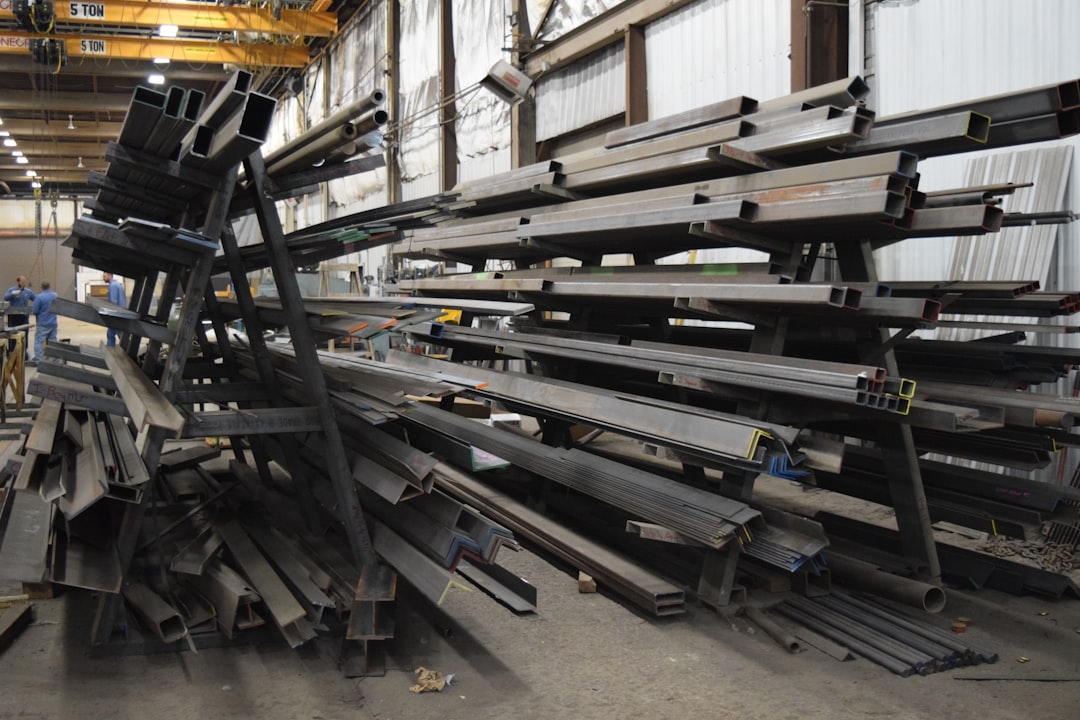
In the world of sheet metal fabrication, standing out in an increasingly competitive market is crucial. Traditional marketing has its place, but digital advertising through Google Ads offers a unique opportunity to capture high-intent leads. Sheet metal fabricators often face challenges like missing high-value prospects and delayed follow-ups, leading to lost opportunities and cooled leads. Leveraging Google Ads effectively can address these pain points by enhancing targeting accuracy and lead engagement. This comprehensive guide will delve into actionable strategies to successfully implement Google Ads campaigns tailored for the sheet metal fabrication industry—providing practical insights for professionals aiming to enhance their digital marketing impact.
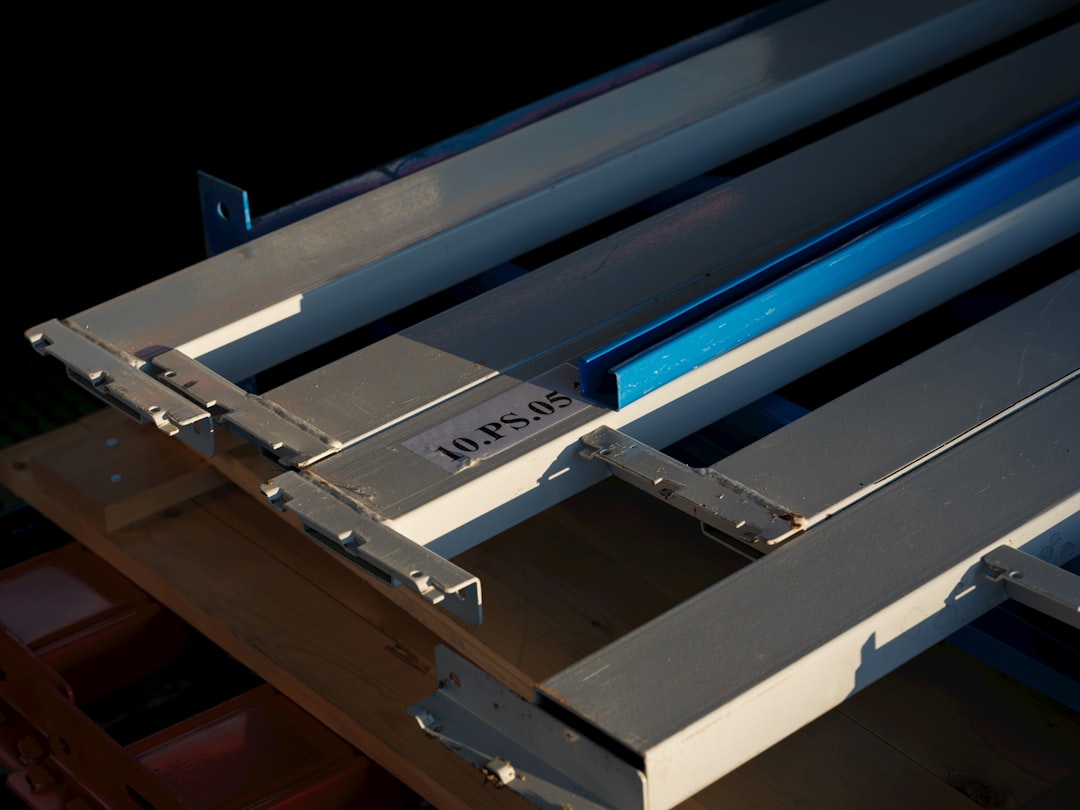
Metal fabrication firms operate in an environment where purchase decisions involve technical requirements, specification reviews, and multiple decision makers. Capturing qualified leads in this space requires digital strategies that move beyond surface-level targeting, leveraging intent signals and data-driven insights to engage buyers at the right moment.
Google Ads for Sheet Metal Fabrication provides a direct channel to buyers actively seeking services like custom cutting, CNC machining, and high-tolerance welding. By integrating advanced targeting with precise audience intelligence, companies can prioritize high-intent prospects and streamline the buyer journey from first click to RFQ submission. For a detailed look at how Google Ads can drive leads and sales in manufacturing, explore this step-by-step guide to Google Ads for manufacturers.
Digital marketing for manufacturers now requires a direct connection between online research and offline sales to win complex, high-value jobs. Google Ads for Sheet Metal Fabrication offers a precise, measurable approach to capturing the attention of procurement managers and engineers as they actively research vendors and capabilities. For additional strategies, explore our marketing insights.

Search campaigns are the backbone of lead generation for fabrication companies, capturing prospects who are actively searching for solutions like custom sheet metal fabrication or CNC machining. By targeting keywords with high commercial intent, these campaigns drive direct inquiries and RFQ submissions from decision makers ready to engage. When enriched with Sona Identification, marketers can move beyond anonymous clicks to see which companies are showing interest, allowing for rapid sales follow-up and personalized outreach.
Display campaigns support brand awareness and nurture leads by placing visual ads on industry-specific websites, news portals, or technical forums where engineers and procurement teams spend time. This approach keeps your brand front-of-mind during longer sales cycles, particularly for complex B2B fabrication projects. Integration with Sona Audiences ensures ads are shown to prospects moving through the funnel, with creative tailored to their previous site interactions or content consumption.
Video ads offer a compelling way to showcase fabrication capabilities, industrial facilities, and project outcomes. These campaigns are ideal for educating technical buyers on specialized processes, certifications, or equipment investments through facility tours or explainer videos. By leveraging Sona Buyer Journeys, teams can adjust targeting to prioritize viewers who demonstrate strong buying signals or spend significant time on high-value service pages. For inspiration, explore this video case study.
Remarketing campaigns re-engage visitors who have explored your services or abandoned RFQ forms, helping to recover lost opportunities and improve conversion rates. Advanced remarketing strategies use Sona Intent Signals to segment audiences by engagement depth or decision stage, so messaging is always relevant. CRM and ad platform sync enables seamless handoff of warm leads, ensuring sales teams focus on accounts most likely to convert.
Ad extensions, such as sitelinks, callouts, and location details, add crucial context and credibility to your search ads. For fabrication marketing, highlighting ISO certifications, facility locations, or fast quoting capabilities increases trust and drives higher click-through rates. Enhanced Sona Ad Conversions within these extensions ties ad engagement to both online and offline outcomes, providing a comprehensive view of campaign ROI for metal fabrication shops.
Ready to enhance your fabrication marketing strategy? Get started for free with Sona.
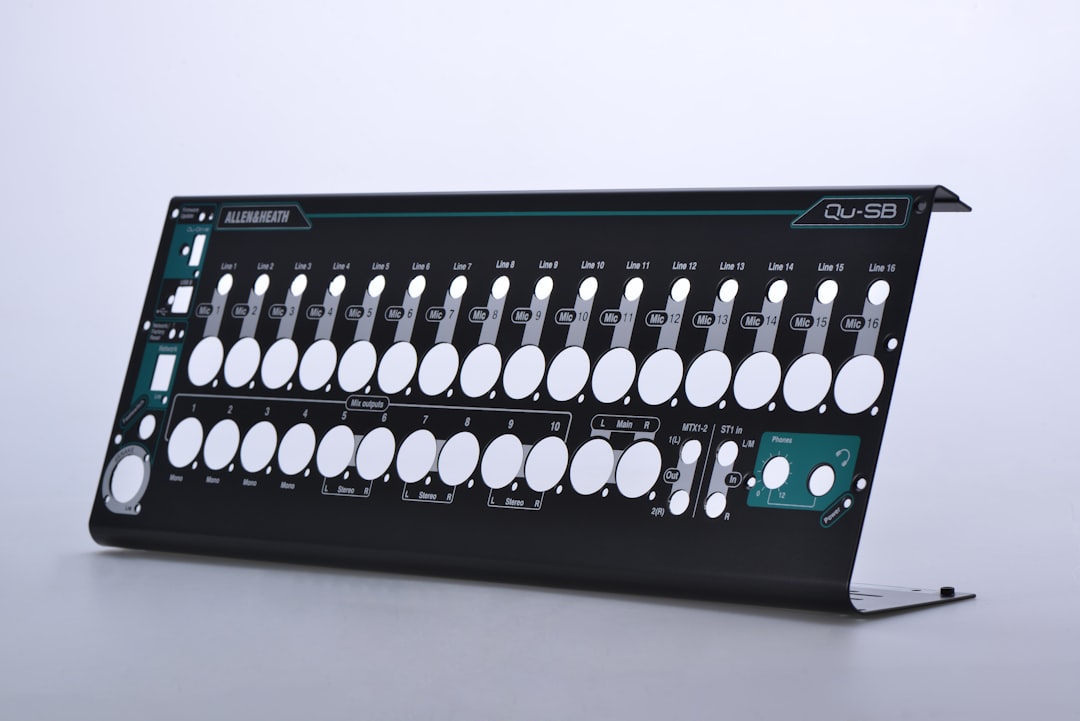
Identifying growth opportunities in fabrication marketing requires a disciplined mix of data-driven research and industry expertise. Leading companies consistently outperform by targeting overlooked niches, refining their keyword portfolios, and leveraging advanced audience insights to secure a competitive edge.
Ready to apply these strategies to your fabrication marketing? Get started for free with Sona.
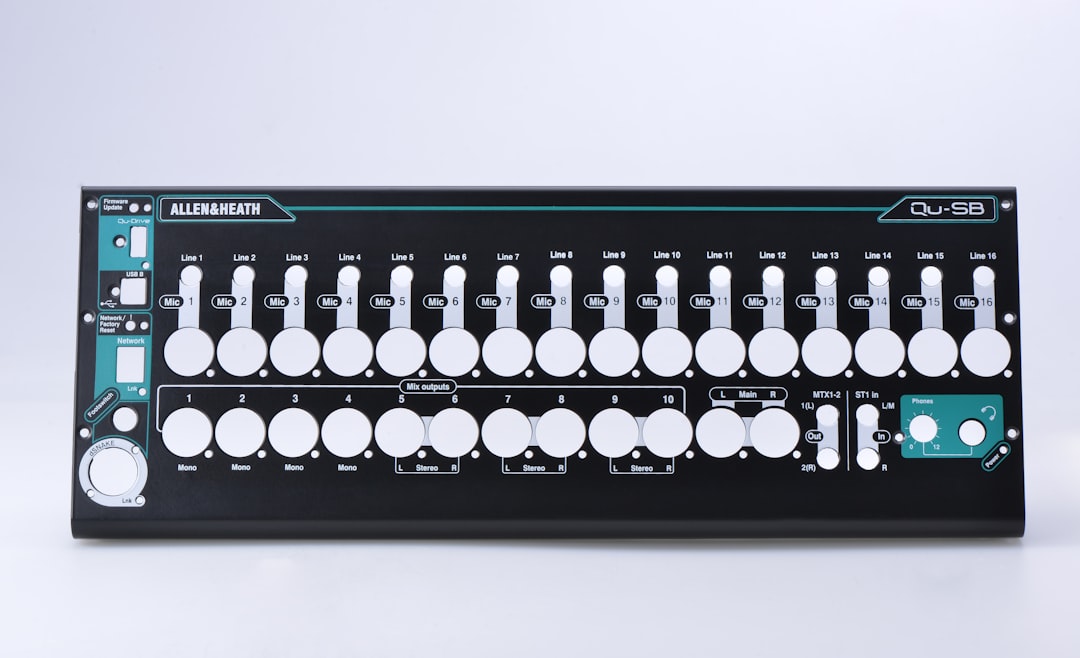
Audience segmentation is essential in elevating the impact of Google Ads for Sheet Metal Fabrication. By strategically dividing prospects based on business size, buying roles, and real-time behavior, metal fabricators can achieve higher engagement and a measurable uptick in qualified RFQs. Leveraging Sona Identification enables marketers to pinpoint which organizations are engaging with ads and landing pages, moving beyond generic targeting to focus on high-value, in-market accounts.
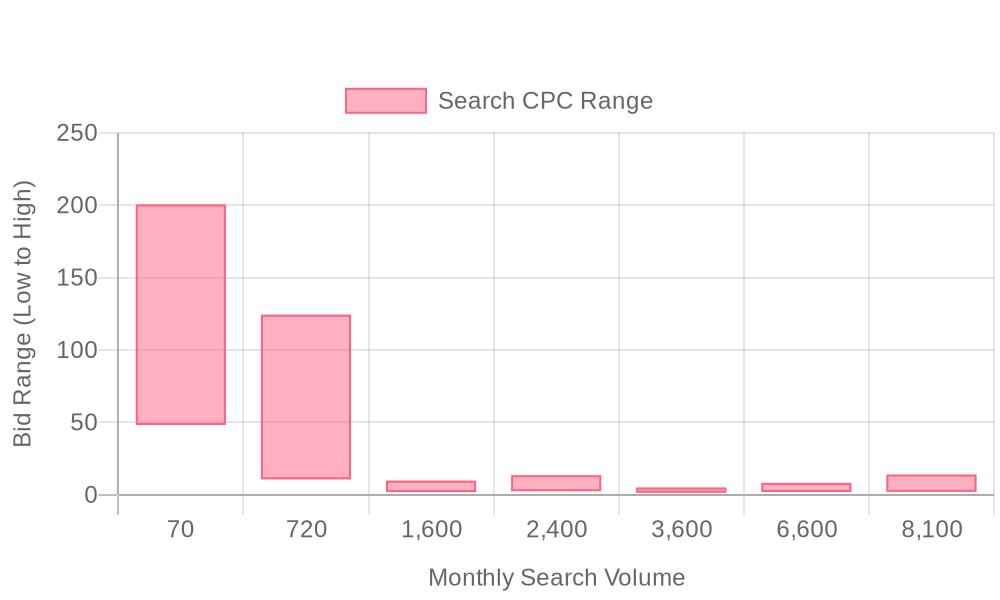
| Industry | Keyword | Monthly Search Volume | Competition Level | Low Bid | High Bid |
| Sheet Metal Fabrication | rapid sheet metal prototyping | 70 | LOW | 48.29 | 200.51 |
| Sheet Metal Fabrication | sheet metal prototyping | 720 | LOW | 10.75 | 124.4 |
| Sheet Metal Fabrication | custom sheet metal | 1600 | LOW | 1.96 | 9.8 |
| Sheet Metal Fabrication | custom sheet metal fabrication | 2400 | LOW | 2.53 | 13.56 |
| Sheet Metal Fabrication | sheet metal shop near me | 3600 | MEDIUM | 1.42 | 5.05 |
| Sheet Metal Fabrication | sheet metal fabrication near me | 6600 | MEDIUM | 1.98 | 8.28 |
| Sheet Metal Fabrication | sheet metal fabrication | 8100 | LOW | 2.14 | 13.98 |
Effective keyword strategy is the foundation of high-performing Google Ads for Sheet Metal Fabrication campaigns. Precision in keyword selection ensures your ads reach buyers with an immediate need for fabrication services, increasing both click-through rates and conversion opportunities. For a comprehensive overview of marketing tactics, explore this metal fabricator marketing guide.
When these keyword strategies are executed with real-time account identification and dynamic audience updates, marketers can route high-intent leads directly into their nurture streams. For example, integrating visitor identification allows you to track which companies are engaging with specific keyword-driven ads, enabling personalized follow-up and improved targeting for future campaigns. Leveraging in-market behavior and CRM data sync ensures your Google Ads efforts always prioritize accounts most likely to convert, elevating both efficiency and measurable results in B2B fabrication marketing. To see the impact firsthand, get started for free with Sona and enhance your sheet metal fabrication campaigns.
A strategic, data-driven approach to Google Ads for sheet metal fabrication ensures your marketing budget delivers measurable returns and high-quality leads. Industrial buyers demand technical specificity and rapid quoting, making tailored campaign execution critical for capturing intent and driving RFQs from the right accounts. For an in-depth look at how manufacturers are generating leads with PPC, see this guide to PPC advertising strategies for manufacturers.
Start by generating keyword lists anchored in the specific manufacturing services and materials your shop provides. Use long-tail phrases such as "precision sheet metal fabrication," "custom laser cutting," and "aluminum enclosure manufacturing," combined with regional modifiers to match local demand. Localizing keywords ensures your ads reach buyers within your logistical footprint, while carefully curated negative keywords prevent wasted spend on job seekers, hobbyists, or non-commercial queries.
Enhance targeting further by aligning keyword selection with your content marketing themes and firmographic filters. With Sona’s Audiences, marketers can go beyond generic search traffic by identifying visiting companies on their site and updating audience segments in real time. This capability allows you to sync enriched audiences directly into Google Ads, continuously refining your targeting as new high-intent accounts emerge and move down the funnel.
Effective ad copy for metal fabrication should address industry pain points: compliance with tight tolerances, fast turnaround, and material certifications. Highlight urgent needs, such as "24-hour quoting" or "AS9100-certified processes," to capture buyers who require immediate solutions. For additional insights on ad copy and campaign setup, explore this Google Ads guide for metal fabrication businesses.
Drive engagement by matching ad language to the technical sophistication of your audience. By leveraging Sona’s intent signals, you can dynamically adjust messaging to address the concerns of decision-makers who have shown recent interest, increasing relevance and boosting qualified click-through rates.
Landing pages must provide a seamless experience from ad click to conversion, mirroring the precise service or material referenced in the ad. Include technical specs, equipment capabilities, and proof of compliance to meet the expectations of engineers and procurement teams. For a look at effective landing page strategies and digital marketing tactics in manufacturing, see this digital marketing overview for fabricated metal products manufacturers.
Connect your landing pages to a CRM or lead management platform, ensuring that every captured inquiry is prioritized for fast follow-up. Sona’s visitor identification enables you to pinpoint which companies are engaging with your RFQ pages, allowing sales teams to act on the highest-value opportunities and further personalize follow-up communications.
Continuously improve campaign performance by employing smart bidding strategies and importing offline conversions—such as closed deals or RFQ submissions—back into Google Ads. This process provides a clear feedback loop, enabling more accurate ROI measurement and budget reallocation toward the highest-converting keywords and audiences. For a detailed case study on Google Ads impact in manufacturing, review this case study on Google Ads for manufacturers.
Align campaign analytics with broader revenue data to surface which ad groups and keywords produce the best pipeline opportunities. Sona’s buyer journeys connects ad clicks to both online and offline sales outcomes, allowing fabrication marketers to fine-tune budgets, prioritize high-value accounts, and dynamically update audiences as buyers progress through their journey. This unified approach is essential for sustaining growth and maintaining a dominant position in highly competitive fabrication markets.
Ready to put this framework into action? Get started for free with Sona.
Innovative digital strategies help sheet metal fabrication companies break through crowded markets, ensuring their expertise reaches decision-makers at the right moment. By synchronizing real-time audience insights with targeted advertising and content, you can accelerate lead generation and reinforce your position as a trusted supplier.
Mastering Google Ads for Sheet Metal Fabrication requires combining technical expertise with data-driven marketing. Consistent integration of CRM, content, and real-time analytics ensures you reach high-intent prospects, convert more qualified leads, and build lasting relationships in competitive B2B manufacturing markets. To streamline your efforts and maximize your impact, get started for free with Sona.
Harnessing the power of Google Ads for sheet metal fabrication can transform your marketing strategy and significantly boost your ROI. As we've explored, the industry-specific challenges you face, such as targeting the right audience and maximizing ad spend, can be effectively addressed through tailored Google Ads campaigns.
By focusing on keyword research, ad customization, and continuous performance analysis, you can craft campaigns that not only reach your ideal customers but also convert them efficiently. Leveraging the right tools and insights ensures that your advertising efforts are optimized for success and aligned with your business goals.
Imagine a future where your ads consistently attract high-quality leads, driving growth and enhancing your brand's visibility in the market. The journey to achieving this transformation begins with taking strategic actions that align with your advertising objectives and the unique demands of the sheet metal fabrication industry.
With our platform, you can gain access to unparalleled insights and capabilities that will elevate your advertising strategies. Start for free to experience the power of our platform and witness the impact it can have on your business today.
Best practices include precise keyword targeting, aligning landing pages with ad copy, fast follow-ups with leads, and using data-driven insights to refine audience segments and messaging for higher conversion rates.
Optimize Google Ads by using data-driven keyword and audience targeting, aligning landing pages with ad copy, segmenting campaigns by industry, part size, or urgency, and continuously refining messaging and audience segments.
The article does not specify an exact budget, but emphasizes aligning spend with high-value opportunities, refining audience segments, and dynamically shifting budget toward accounts demonstrating urgent project needs for better ROI.
Target high-intent keywords like 'sheet metal fabrication near me,' 'custom aluminum sheet metal parts,' and long-tail keywords such as 'ASME certified custom pressure vessel welding' to capture technical buyers with specific needs.
Measure success by linking ad clicks to RFQ submissions, in-person consultations, and closed deals, using advanced attribution to track the full impact of campaigns on sales and adjusting strategies based on performance data.
Join results-focused teams combining Sona Platform automation with advanced Google Ads strategies to scale lead generation

Connect your existing CRM

Free Account Enrichment

No setup fees
No commitment required

Free consultation

Get a custom Google Ads roadmap for your business
Join results-focused teams using Sona Platform automation to activate unified sales and marketing data, maximize ROI on marketing investments, and drive measurable growth

Connect your existing CRM

Free Account Enrichment

No setup fees
No commitment required

Free consultation

Get a custom Google Ads roadmap for your business
Over 500+ auto detailing businesses trust our platform to grow their revenue
Join results-focused teams using Sona Platform automation to activate unified sales and marketing data, maximize ROI on marketing investments, and drive measurable growth

Connect your existing CRM

Free Account Enrichment

No setup fees
No commitment required

Free consultation

Get a custom Google Ads roadmap for your business
Over 500+ auto detailing businesses trust our platform to grow their revenue
Join results-focused teams using Sona Platform automation to activate unified sales and marketing data, maximize ROI on marketing investments, and drive measurable growth

Connect your existing CRM

Free Account Enrichment

No setup fees
No commitment required

Free consultation

Get a custom Google Ads roadmap for your business
Over 500+ auto detailing businesses trust our platform to grow their revenue
Join results-focused teams using Sona Platform automation to activate unified sales and marketing data, maximize ROI on marketing investments, and drive measurable growth

Connect your existing CRM

Free Account Enrichment

No setup fees
No commitment required

Free consultation

Get a custom Google Ads roadmap for your business
Over 500+ auto detailing businesses trust our platform to grow their revenue
Our team of experts can implement your Google Ads campaigns, then show you how Sona helps you manage exceptional campaign performance and sales.
Schedule your FREE 15-minute strategy sessionOur team of experts can help improve your demand generation strategy, and can show you how advanced attribution and data activation can help you realize more opportunities and improve sales performance.
Schedule your FREE 30-minute strategy sessionOur team of experts can help improve your demand generation strategy, and can show you how advanced attribution and data activation can help you realize more opportunities and improve sales performance.
Schedule your FREE 30-minute strategy sessionOur team of experts can help improve your demand generation strategy, and can show you how advanced attribution and data activation can help you realize more opportunities and improve sales performance.
Schedule your FREE 30-minute strategy sessionOur team of experts can help improve your demand generation strategy, and can show you how advanced attribution and data activation can help you realize more opportunities and improve sales performance.
Schedule your FREE 30-minute strategy session





Launch campaigns that generate qualified leads in 30 days or less.
